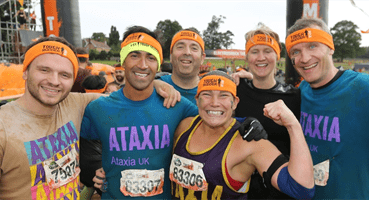The PROSPAX Consortium has recently published two new research papers as part of the PROSPAX project, an international project that aims to better understand how spastic ataxias progress over time to prepare well-designed treatment trials for these conditions. This is called ‘trial-readiness’.
In the first paper, researchers aimed to find a diagnostic tool derived from conventional Magnetic Resonance Imaging (MRI) sequences able to distinguish between Autosomal Recessive Ataxia of Charlevoix-Saguenay (ARSACS) and Spastic Paraplegia Type-7 (SPG-7) used as a common proxy of spastic ataxia.
MRI is a non-invasive imaging technique that uses magnetic fields and radio waves to investigate in-vivo brain structure and function. As this technique is a mandatory part of the diagnostic workup of patients with a clinical suspect of ataxia, the identification of an imaging feature that can help neurologists in achieving a final diagnosis is of undoubtful interest.
The researchers found that, compared to controls and SPG7 subjects, ARSACS patients show a significant increase in the volume of the pons, the part of the brainstem linking the brain and spinal cord. Furthermore, researchers found an association between increased pons and reduced volume of the superior portion of the cerebellum, showing that a cutoff value of 1.67 of the ratio between these two structures can discriminate with high accuracy ARSACS from SPG7 patients.
The researchers have named this method the Magnetic Resonance Index for the Assessment and Recognition of patients harbouring SACS mutations – MRI-ARSACS, proposing it as a novel neuroradiological diagnostic tool.
Read the paper here.
In the second paper, researchers aimed to measure aspects of gait and movement in ARSACS using wearable sensors. 18 people with ARSACS and 18 healthy controls were asked to wear 3 different sensors whilst walking in lab and public settings.
The measurements taken from the sensors were then compared to the standard symptom rating scales, including the Scale for the Assessment and Rating of Ataxias (SARA) and the Spastic Paraplegia Rating Scale (SPRS), a highly patient relevant, since mobility-oriented subscore of the SPRS (SPRS mobility) as well as others.
The researchers saw that out of the 30 digital gait measures, 14 were able to distinguish ARSACS from healthy controls with high effect sizes in a lab setting, and 11 in a public setting. The best parameters correlated very well with patients’ mobility functions, as captured by the SPRS mobility. This shows that wearable sensors are a valid method of measuring gait and movement in ARSACS, closely correlating with patient-relevant mobility dysfunctions – and showing this power even in public settings, which are closer to real-life than lab settings.
If their sensitivity to change is validated while following individuals over a long period of time, these digital gait measures might serve as outcome measures in upcoming treatment trials for ARSACS and potentially also other diseases from the >200 spastic ataxias.
Read the paper here.
To read more from the PROSPAX Consortium, click here and here.







